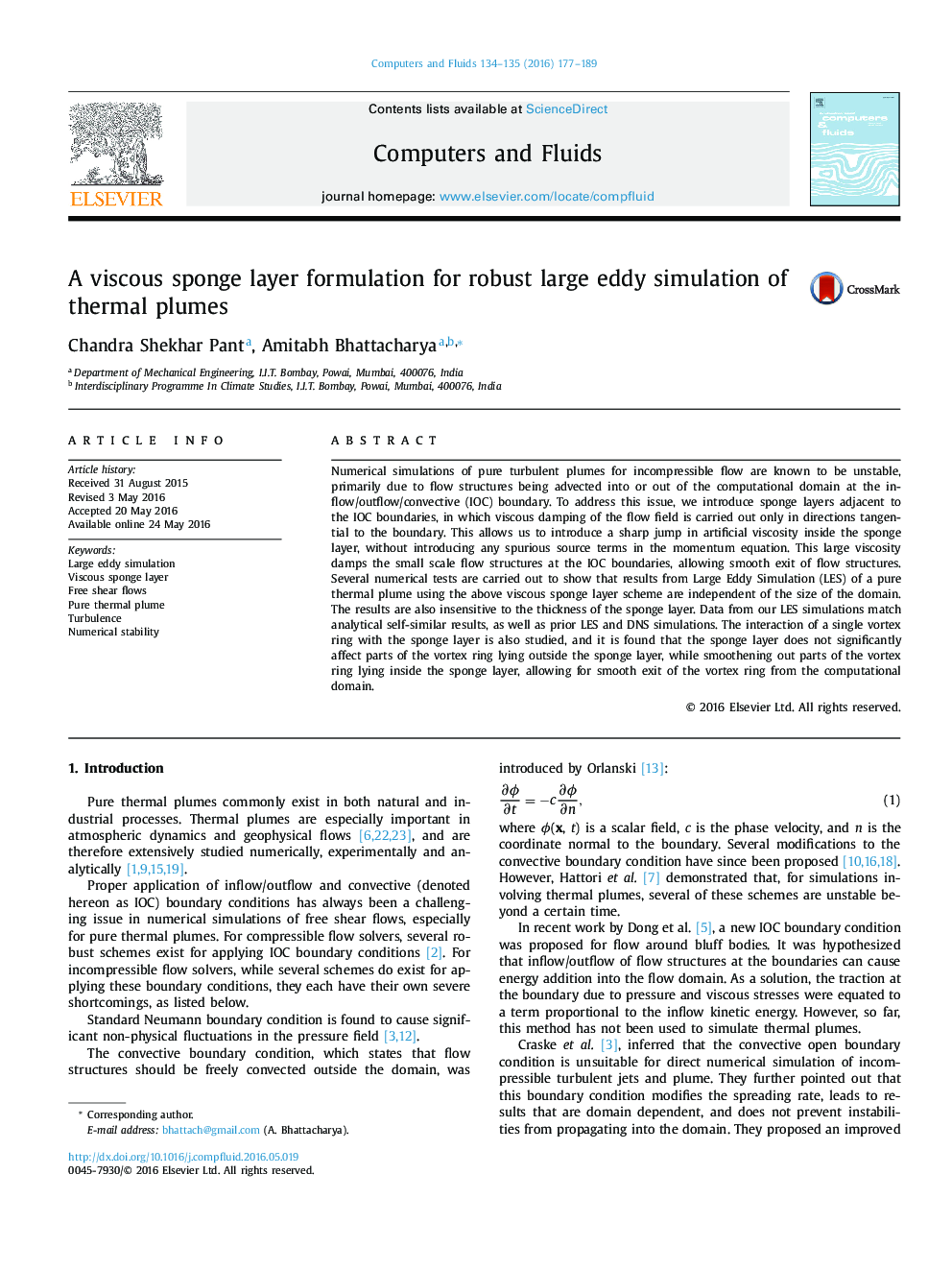| کد مقاله | کد نشریه | سال انتشار | مقاله انگلیسی | نسخه تمام متن |
|---|---|---|---|---|
| 768067 | 1462676 | 2016 | 13 صفحه PDF | دانلود رایگان |
• Novel way to implement a viscous sponge layer for open boundaries introduced.
• Flow structures are diffused in wall-parallel direction inside the sponge layer.
• LES of turbulent thermal plume is shown to be stable with the help of this sponge layer technique.
• Flow structures and turbulent statistics outside the sponge layer are not affected.
• Method is easy to implement in existing LES code.
Numerical simulations of pure turbulent plumes for incompressible flow are known to be unstable, primarily due to flow structures being advected into or out of the computational domain at the inflow/outflow/convective (IOC) boundary. To address this issue, we introduce sponge layers adjacent to the IOC boundaries, in which viscous damping of the flow field is carried out only in directions tangential to the boundary. This allows us to introduce a sharp jump in artificial viscosity inside the sponge layer, without introducing any spurious source terms in the momentum equation. This large viscosity damps the small scale flow structures at the IOC boundaries, allowing smooth exit of flow structures. Several numerical tests are carried out to show that results from Large Eddy Simulation (LES) of a pure thermal plume using the above viscous sponge layer scheme are independent of the size of the domain. The results are also insensitive to the thickness of the sponge layer. Data from our LES simulations match analytical self-similar results, as well as prior LES and DNS simulations. The interaction of a single vortex ring with the sponge layer is also studied, and it is found that the sponge layer does not significantly affect parts of the vortex ring lying outside the sponge layer, while smoothening out parts of the vortex ring lying inside the sponge layer, allowing for smooth exit of the vortex ring from the computational domain.
Journal: Computers & Fluids - Volumes 134–135, 1 August 2016, Pages 177–189
